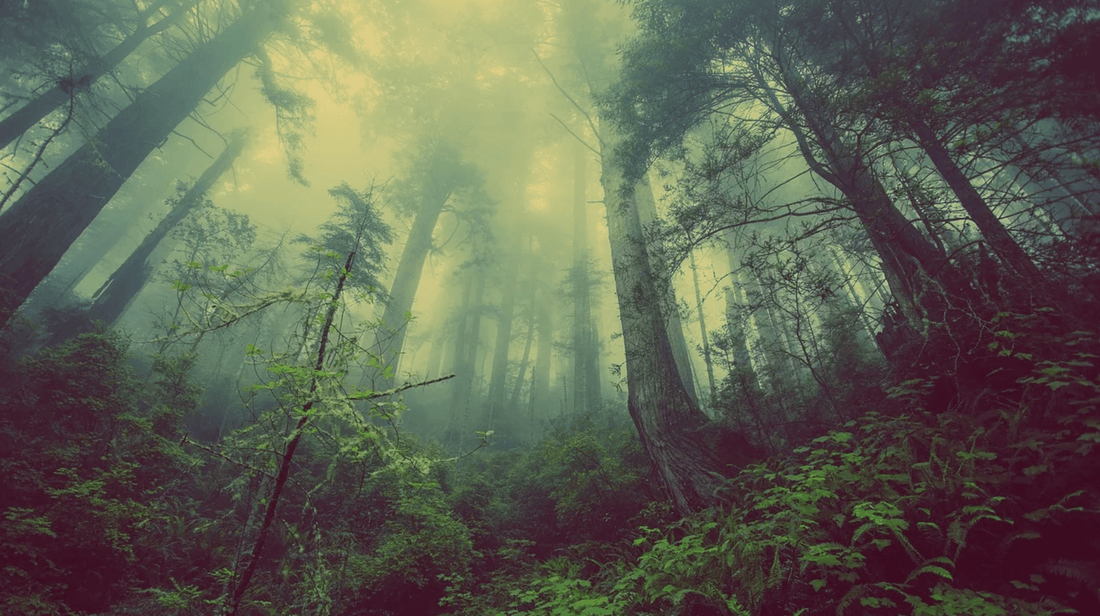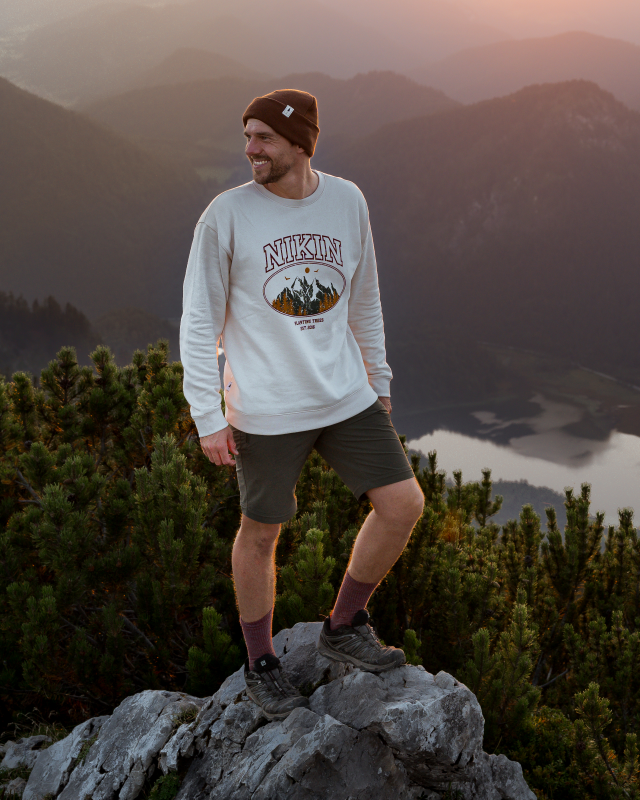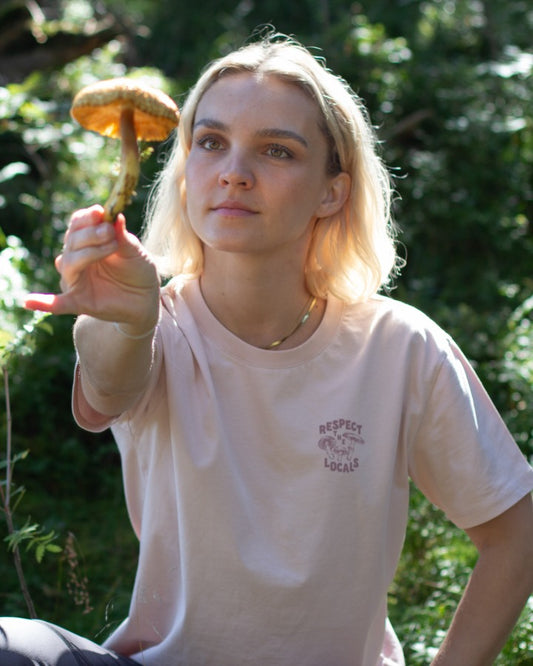Trees and their functions are vital for humans and animals. Many trees together form a forest, which immediately serves as a source of food and habitat. With the spread of human civilisation, millions of hectares of forest had to give way. We present the 10 largest forests that are still left.
Trees and their functions are vital for humans and animals. Many trees together form a forest, which immediately serves as a source of food and habitat. With the spread of human civilisation, millions of hectares of forest had to give way. We present the 10 largest forests that are still left.
#10 Primorye Forest
The smallest of the ten giants is located in south-eastern Russia. With its 130,000 km2, the Primorye Forest covers the equivalent of 18.2 million football fields. It is home to many endangered species such as the Siberian tiger. According to current information, its population is just 500. It is also the only forest in the world where tigers, bears and leopards coexist.
#9 Burmese Tropical Rainforest
Myanmar in Asia is home to one of the oldest rainforests in the world. It is located between the Pacific and Indian Oceans, near the equator, and is rich in biodiversity due to the diverse environmental conditions it has experienced to date. It provides habitat for a large number of exotic animal species, such as the Asian elephant, gibbons and Bengal tigers.
Originally, this forest was part of a much larger environmental system, but due to increased deforestation by humans and their industrial use of wood, its size is shrinking the longer it lasts. Today, its size is (still) around 233,000 km2. If nothing changes soon, the forest will probably disappear from the world map in our lifetime.
#8 Valdivian Rainforest
One of the youngest and largest forests in the world stretches across the two countries of Chile and Argentina. Only 17,000 years ago, this landscape was still covered by eternal ice. The animals living here are comparatively very small. For example, the smallest deer species, pudu, and the smallest wild cat, kodkod, live in this region. But even this forest is unfortunately only protected to a small extent and thus endangered from progressive deforestation.
#7 Tropical rainforest in Borneo
The oldest tropical rainforest in the world is located on Borneo and has existed for around 140 million years. In addition to more than 10,000 different plant species, it is also home to rare animal species such as the Sumatran rhinoceros, whose population is estimated at just 250 animals worldwide.
Borneo's best-known animal, the Bornean orangutan, is also on the list of endangered animals, in the critically endangered column. To a large extent, this is due to the still steadily increasing deforestation for industrial goods such as palm oil. In order to ensure the preservation of this biodiversity, NIKIN is also planting trees here in cooperation with Borneo Orangutan Survival (BOS Switzerland), among others. At the moment, the size of the forest is around 290,000 km2, but if something does not change soon, the area here will also shrink faster than one would like.
#6 New Guinea Tropical Rainforest
One of the most extraordinary rainforests in the world is located in New Guinea. In addition to the diverse plants and animals, more than 1,000 indigenous tribes live in this forest. Moreover, a large part of the forest has still not been explored, making it a hotspot for researchers from all over the world. The fact that 5-10% of all animal species on earth live here makes it all the more interesting for researchers, so it is not surprising that large parts of the 545,000 km2 forest are protected.
#5 Tropical rainforest in Congo
In contrast to the Valdivian rainforest, a variety of rather large animals live here, including the gorillas, hippopotamus and the African elephant, which, by the way, is the largest animal living on the land. As in the rainforest of New Guinea, some shoots and primitive peoples still live in harmony with nature. Although it is currently one of the forests least affected by deforestation, there is a great danger of clearing due to its richness in resources. It currently covers an area of around 1,780,000 km2, making it the second largest rainforest in the world.
#4, #3, #2 The Taiga
The taiga once stretched from Canada across Norway to Siberia. However, due to natural changes and continental drift, the forest split into three separate parts. However, since it is basically one and the same system, number 4, 3 and 2 are taken together here.
The taiga is known for the enormous variety of fir trees, but due to its geographical location, the biodiversity here is not broad. In winter, temperatures can easily drop to -40°C or lower.
But even in this actually hostile area, diverse animal species such as bears, wolves, foxes and beavers live. Despite its one-sidedness in terms of tree species, the taiga absorbs moreCO2 from the atmosphere than the tropical and temperate forests combined. Therefore, targeted protection of these forests is essential, but unfortunately currently only very poorly guaranteed.
The largest part of the taiga is covered by the Canadian Boreal Forest with about 4,200,000 km2, the East Siberian Taiga covers a size of about 3,900,000 km2 and even the smallest part, has a proud area of over 2,156,000 km2. In total, the taiga covers about 30% of the world's forest cover.
#1 Amazon
The undisputed number 1 is probably the most famous forest on earth, the South American Amazon. The forest of all forests, with its fabulous 5,500,000 km2 , not only has the largest area, but is also home to one in ten species existing on earth. It is the most diverse forest and has the widest range of plants and animals in the world. In total, an estimated 290 trillion trees grow in the Amazon. Animals such as jaguars, spider monkeys, toucans, sloths and thousands of other species are among its inhabitants. Its age is a proud 55 million years, but with human influence the Amazon has already lost 20% of its original size. That's about 800,000 km2, the equivalent of the Primorye Forest, the Burmese Rainforest and the Valdivian Rainforest (numbers 10, 9 and 8) combined! An unbelievable 90% of it has been cleared for the livestock industry.
Life without forests is impossible and therefore it is up to us to do something about global deforestation. Even small steps can make a big difference. Donate a tree via OneTreePlanted, or lend a hand yourself and make the earth a greener and therefore more beautiful place.
OneTreePlanted is a long-standing partner of NIKIN with whom we enjoy a great collaboration. For every product sold, we work with OneTreePlanted to plant a tree in a place in the world that desperately needs it. So, for example, if you buy a Treeanie for example, the planting of a tree is automatically initiated. We also send a personal tree certificate with your order, confirming that a tree is being planted in your name.
























8 Comments
merci pour cet article
J'aime bien tout ce qui concerne la flaure et la faune et je vous soutien
Sorry, please ignore my last comment, I now see that you referred to it as the taiga, not the boreal, which is what it's known as where I live.
Isn't the Boreal Forest the largest in the world? Considering it's 12 million km2 and accounts for 1/3 of the entire world's forests? Is there a reason you do not consider this continual forest a forest at all, or have you just missed it? Thank you, Evelynne.
Are there any real forest friends in Frankfurt or in the vicinity, or a non-profit working group that enriches each other in terms of knowledge and joie de vivre?
We can also found a new group and have free rooms where we can meet.